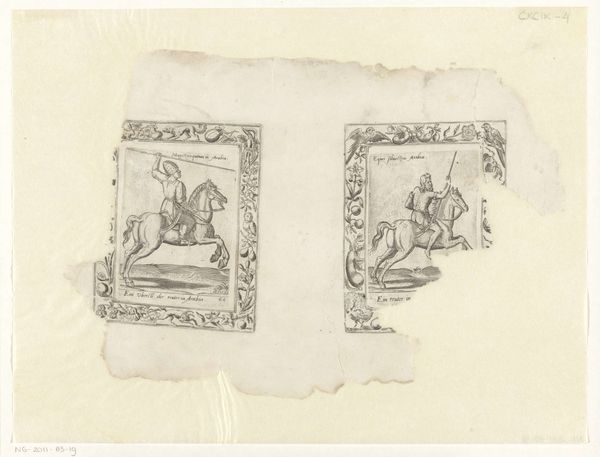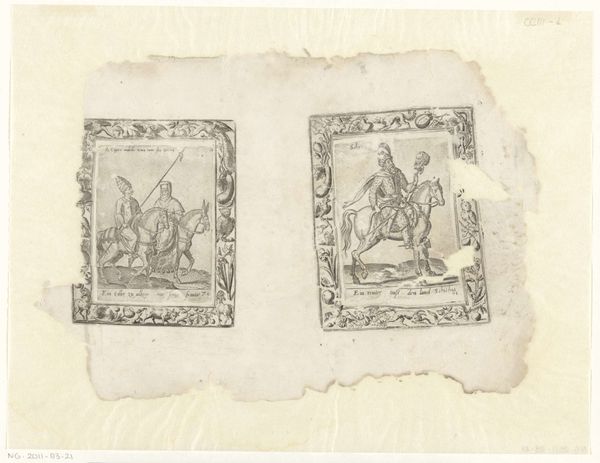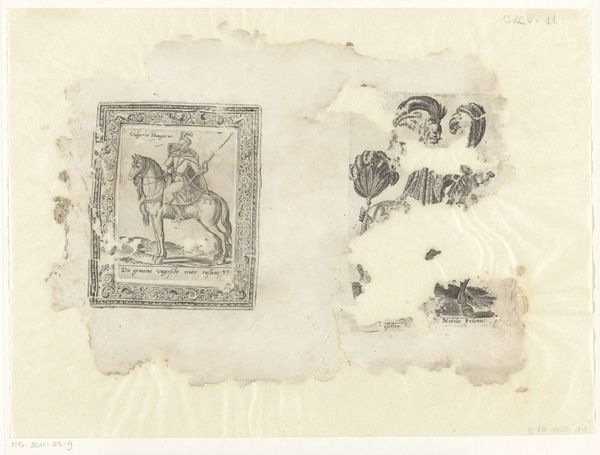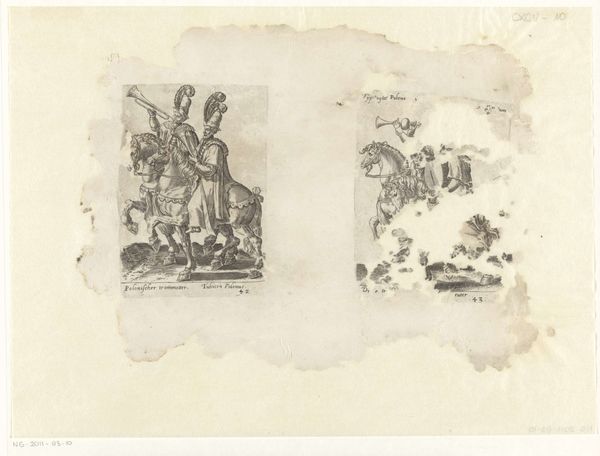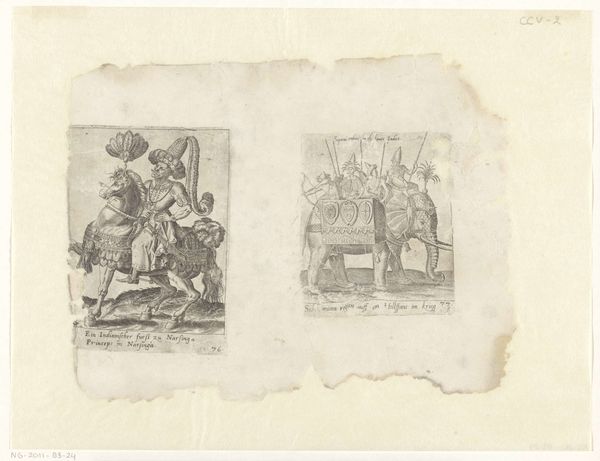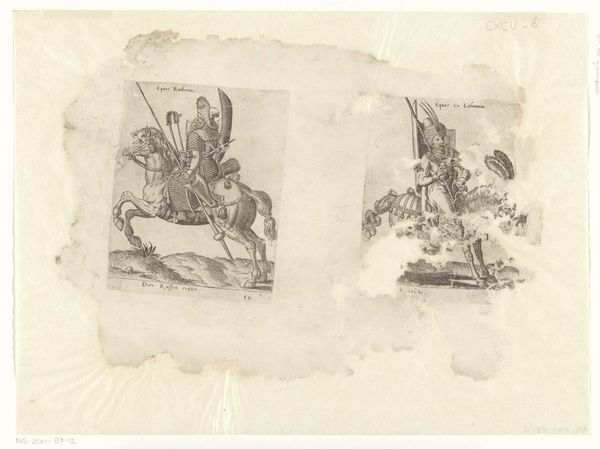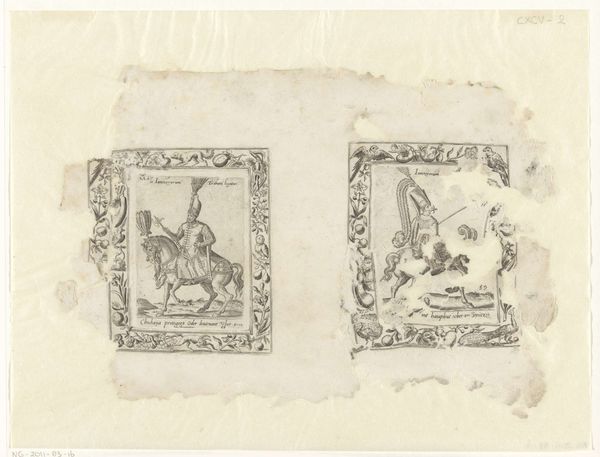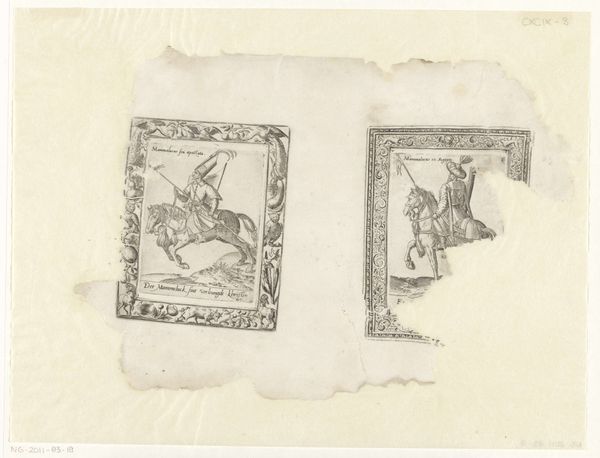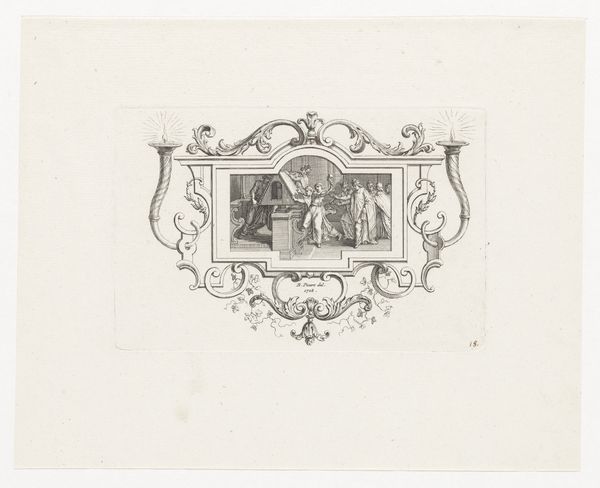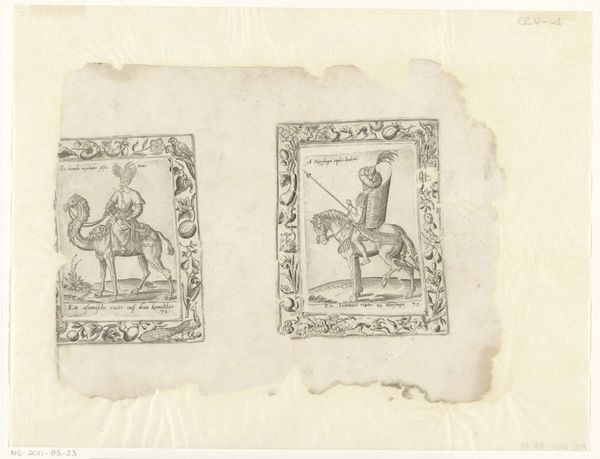
Groot-vizier Ibrahim Pasha en de leider van de Janitsaren 1576 - 1596
0:00
0:00
abrahamdebruyn
Rijksmuseum
drawing, print, ink, engraving
#
portrait
#
drawing
# print
#
figuration
#
11_renaissance
#
ink
#
history-painting
#
engraving
Dimensions: height 237 mm, width 334 mm
Copyright: Rijks Museum: Open Domain
Curator: This intriguing print from the late 16th century, attributed to Abraham de Bruyn, depicts "Grand Vizier Ibrahim Pasha and the Leader of the Janissaries". Editor: There's an almost dreamlike quality to these figures rendered in ink. It’s fragmentary, almost like a salvaged memory. The equestrian portrait on the left especially; the rider seems self-assured, and the horse poised and ready. Curator: De Bruyn's skillful use of engraving creates striking textures and detail. Notice the intricate ornamentation on the horse's harness, contrasted with the plain robes of the Janissary leader. These are just outlines of status, really. Editor: And those turbans! Towering symbols of power and identity, right? They seem almost exaggerated, emphasizing the social hierarchy being represented. It invites questions of cultural representation – who is this made for, and what narrative is being told? Curator: The print functions as both portraiture and a commentary on political figures of the time. Engravings like this one circulated widely. The material—cheap ink on paper—was widely accessible to a growing, eager market. They served as crucial vehicles for the dissemination of images and ideas, especially during the period of tense relations and trade. Editor: This image serves as an historical record but also invites us to examine the cultural context from which it emerged. What narratives about the Ottoman Empire were circulated at this time and why? The very act of representation involves both power and interpretation. Curator: It's easy to lose sight of just how potent and portable these prints would have been. I think of it in the context of the labor involved to make it. Editor: The wear and tear, the missing sections - even these physical aspects of the work tell a story, an unearthing of something deeply imbedded in our world today. Curator: I agree. It serves as a tactile reminder of how we interact with history. Editor: Absolutely. Thanks for shedding light on the image through your specific lens of materiality and historical context. Curator: Thank you; I enjoyed bringing that lens to this topic.
Comments
No comments
Be the first to comment and join the conversation on the ultimate creative platform.
